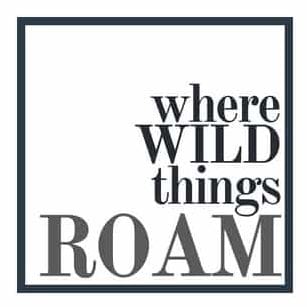Roam Australia’s spectacular Kakadu
Kakadu National Park is a living cultural landscape, and ancient escarpment and stone country spans more than two billion years of geological history. Its rivers and coastal floodplains are more dynamic environments, shaped by changing sea levels and big floods every tropical summer.
The area is home to archaeological sites that record the skills and way of life of Aboriginal people over tens of thousands of years. Kakadu’s rock art documents Indigenous creation stories and makes up one of the longest historical records of any group of people in the world.
Kakadu is dual-listed on the UNESCO World Heritage List for its outstanding natural and cultural values. People aren’t exaggerating when they refer to Kakadu as a world-class destination – only a few dozen sites around the globe appear on the World Heritage List for both their natural and cultural significance (and only four places in Australia).

As the Northern Territory borders officially re-open from 17 July, and with bargain air fares announced to Darwin, there’s never been a better time to visit Australia’s most spectacular natural playground.
Paul Hogan brought Kakadu to the world’s attention in Crocodile Dundee, but unlike most winter dry seasons – from April through to October – this year Australians will have Kakadu National Park to themselves.
Travel to Kakadu
The ‘dry’ season is actually made up of three seasons, according to Kakadu’s Indigenous calendar, which has been developed over 65,000 years of habitation of the region. Yekke lasts from mid-May to June, Wurrkeng is classified as the “cold weather season” (mid-June to mid-August) but while overnight temperatures might dip to the mid-teens, daytime temperatures usually reach 30C. The dry season finishes with Kurrung from mid-August through October, when millions of magpie geese cover the receding wetlands, along with over 200 other bird species and a vast range of other animals, making it one of the “greatest (natural) shows on earth”.
Kakadu is best seen over three or four days, or preferably a week, to follow in the footsteps of ‘Hoges’ and experience the dramatic landscape, rich Indigenous culture, surging waterfalls and abundant wildlife.
Kakadu is less than three hours’ drive from Darwin, with fully-sealed roads making travel to and within Kakadu National Park easy, though 4WD vehicles are recommended to ensure visitors can enjoy the full Crocodile Dundee experience.
Must do’s

Sunset at Ubirr
Ubirr is the rock formation in Kakadu National Park where Mick Dundee climbs to the top, points toward the horizon, and says “This is my backyard, and over there is the Never Never” while the movie camera pans across the flood plain. One of the icons of Kakadu, Ubirr’s rock art galleries contain a remarkable panoramic sweep of history with drawings ranging from the thylacine to the arrival of Europeans. Best time to visit is sunset, when the setting sun creates a rich palette colours on the rock outcrops and the vast Nadab Plain below, where buffalos in their thousands used to roam decades ago.
Sunrise on Yellow Water Billabong
A visit to Kakadu must include a Yellow Water Cruise. While crocodiles are always the most prized sighting – and you’re likely to see many of the prehistoric creatures on your cruise – the bird-life is equally awe-inspiring. There are some 260 varieties to spot, from majestic eagles through to the remarkable comb-crested jacana, better known as the ‘Jesus bird’ because of the illusion creates as it seemingly walks on water. The Cruise guides provide expert commentary, with an Indigenous narrative of the heritage, culture, flora and fauna of the wetlands. Cruises operate throughout the year, with sunrise and sunset cruises the most popular.
Legendary rock-art
Nourlangie Rock and the Anbangbang billabong feature heavily in Crocodile Dundee, providing a perfect opportunity for ‘Mick’ Dundee to show American journalist, Sue Charlton, Kakadu’s rich wildlife and his outback ‘skills’. Nourlangie houses some of Kakadu’s most historic rock art. Paintings such as Namarrgon (Lightning Man) explore the relationship of the people to their country and belief. The paintings illustrate the important stories, food sources, wars and mythological figures and can be viewed as part of a 1.5 km circular walk. Free guided walks are offered by Park rangers during much of the year, where you will discover how Indigenous people developed grinding stones for crushing seeds and later used the stones to crush ochre for painting. Climb to the top of the rock for sweeping views of the escarpment, while you can follow in Hoges’ footsteps through the paperbark forest on the Anbangbang Billabong Walk.

Australia’s most spectacular natural infinity pool
Located on Waterfall Creek, Gunlom – known as Echo Pool when Paul Hogan and Linda Kozlowski take a swim there in Crocodile Dundee – is a magical combination of waterfall and serene plunge pool, with shady gums cooling the picnic areas. The climb to the top of the waterfall is worth the effort as it offers a series of plunge pools, including an infinity rock pool providing panoramic views across the southern parts of Kakadu National Park. The Gunlom Billabong at the base of the waterfall provides a cool, quiet resting place. A walking route to the top of the falls and lookouts takes approximately one hour over a steep terrain and provides sweeping views of the southern most parts of Kakadu National Park.
Fly like an eagle
During the tropical summer, Kakadu sees torrents of water collect on the Escarpment and pour down the rock faces, creating awesome waterfalls, best viewed from the air. A fixed wing or helicopter aerial tour of Kakadu is an unforgettable experience, with the experienced pilots able to show you the many locations that starred in the Crocodile Dundee films, including a landing strip which featured in the sequel, where the ‘drug plane’ landed. Unfortunately, in real life, the airstrip proved too short for the plane to take off again!
The only place to end up in a croc
Crocodiles are, naturally, at the heart of the Crocodile Dundee story, but also the heritage and culture of Kakadu. Known in the local language as ‘ginga’, the crocodile inspired the now world-famous Crocodile Hotel in the township of Jabiru. Fearsome looking from the air, The Croc – as everyone knows it – is far more welcoming once you enter through its jaws, with comfortable rooms, an excellent restaurant serving the best in bush foods, a large cooling swimming pool and native gardens, and Ochre Art Gallery, where local Indigenous artists share their creative talents with guests as they paint intricate works of art.
Where to stay

Mercure Kakadu Crocodile Hotel is located in Jabiru, the main township of Kakadu. Rooms are available from $159 per night.
Cooinda Lodge is in the southern part of Kakadu National Park and offers fully-upgraded Lodge rooms (available from $199 per night), Outback Retreat glamping tents (from $170 per night) and extensive grounds for camping and caravans (from $30 a night). Located next to Yellow Water Billabong and a short drive to the Warradjan Cultural Centre, Cooinda Lodge is a welcoming oasis, with two swimming pools pools, restaurants, a general store, and petrol station.
For accommodation bookings: https://kakadutourism.com/accommodation





